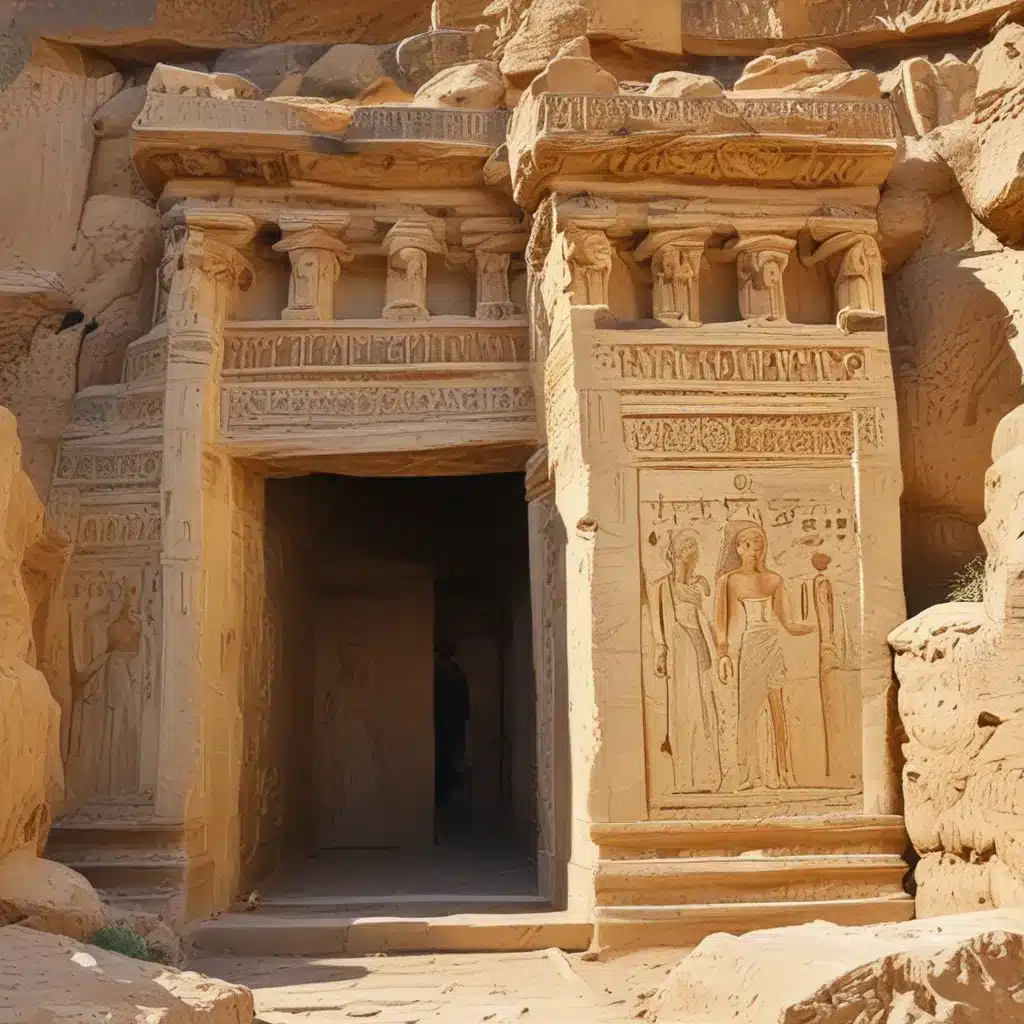
Unveiling the Secrets of Vergina: A Journey Through Time
As I step through the entrance of the Great Tumulus in Vergina, Greece, I can’t help but feel a sense of awe and anticipation. This ancient burial mound, built to protect the resting place of Macedonian royalty, has long captured the imagination of historians and archaeologists worldwide.
My journey began at the Royal Tombs in Hue, Vietnam, where I was captivated by the grandeur and mystery of these ancient sites. But nothing could have prepared me for the wonders that lay in store at Vergina, the ancient capital of the Macedonian Kingdom and the burial ground of some of the most influential figures in history.
As I descend the dimly lit pathway, the air thick with anticipation, I can’t help but wonder what secrets these hallowed halls hold. The museum within the Great Tumulus is a treasure trove of artifacts, each one telling a story of a bygone era.
Uncovering the Tomb of Philip II
The centerpiece of this remarkable collection is the tomb of Philip II, the father of the legendary Alexander the Great. In 1977, archaeologist Manolis Andronicos made the discovery of a lifetime when he uncovered this long-lost tomb, untouched for over 2,300 years.
I stand before the larnax, the ornate container holding Philip’s ashes, and I’m struck by the sheer power and presence of this monumental figure. The wreath that adorned his head as a symbol of his kingship rests atop the urn, a tangible link to the past.
Surrounding the larnax are the personal belongings of the great king – his weapons, his armor, and even the fragments of his ornate bed frame. These artifacts speak volumes about the opulence and grandeur of the Macedonian court, a testament to the wealth and influence of Philip’s reign.
As I gaze upon the shield, I’m transported back in time, imagining the fearsome battles that Philip must have waged. The intricate carvings depicting Achilles slaying the Amazonian Queen Penthesilea are a masterpiece of ancient craftsmanship, a true work of art that transcends the centuries.
Discovering the Tomb of Alexander IV
But the wonders of Vergina don’t end with Philip’s tomb. In 1978, the tomb of Alexander the Great’s son, Alexander IV, was also discovered, untouched and brimming with extraordinary artifacts.
I stand before the larnax containing the ashes of this young prince, cut down in the prime of his life by the machinations of his father’s successors. The wreath that adorns his urn is a poignant reminder of the fragility of power and the tragic fate that often befell the Macedonian royal family.
As I gaze upon the riches that accompany Alexander IV to his final resting place, I’m struck by the sheer opulence and grandeur of the Macedonian court. The jewelry, the weapons, the ornate furnishings – all testify to the wealth and status of the Macedonian nobility.
Exploring the Polycentric Museum of Aigai
But the story of Vergina doesn’t end with the Royal Tombs. In 2022, the Central Museum of Aigai opened, providing a more holistic and captivating exploration of the ancient capital.
As I wander through the bright, modern galleries, I’m struck by the ingenuity of the museum’s curators. They’ve taken a decidedly unconventional approach, displaying artifacts in unexpected and intriguing ways. Nails, lamps, and pottery become works of art, each one a testament to the skill and craftsmanship of the Macedonian people.
The centerpiece of the museum is the stunning statue of Eurydice, the mother of three Macedonian kings, including Philip II. As I gaze upon her regal visage, I can’t help but be reminded of the powerful women who wielded influence in the Macedonian court, often behind the scenes.
Uncovering the Secrets of the Ancient World
As I leave the Polycentric Museum of Aigai and step back into the sunlight, I’m struck by the sheer weight of history that permeates this place. Vergina, once the heart of the Macedonian Empire, is now a testament to the enduring power of the human spirit, a place where the past and present collide in a symphony of discovery and wonder.
I can’t help but feel a deep sense of gratitude for the archaeologists, historians, and curators who have dedicated their lives to uncovering the secrets of the ancient world. Their efforts have allowed us to glimpse the lives of the Macedonian royalty, to understand the intrigues and power struggles that shaped the course of history.
And as I plan my next journey, I can’t help but wonder what other ancient wonders await discovery, just waiting to be uncovered and shared with the world. One thing is certain: my visit to Vergina has ignited a newfound passion for exploring the mysteries of the past, and I can’t wait to see what other hidden gems await me on my travels.
So, if you find yourself in Seoul, South Korea, be sure to carve out some time to explore the rich history and culture of this remarkable country. And who knows – you might just stumble upon your own personal Vergina, a place where the past and present collide in a stunning display of human ingenuity and perseverance.

